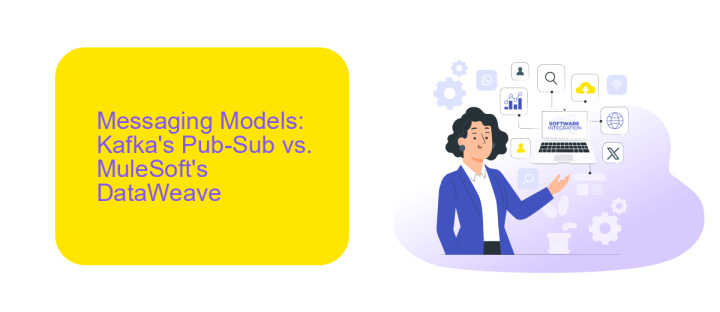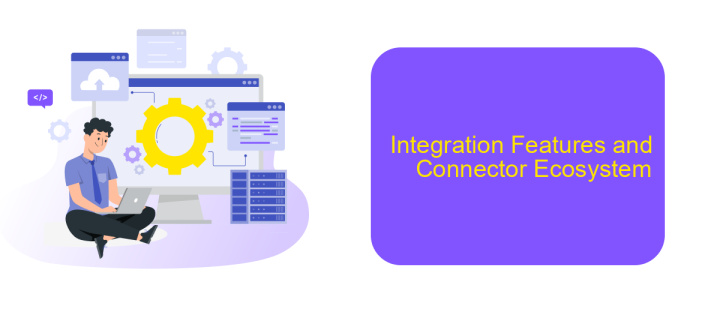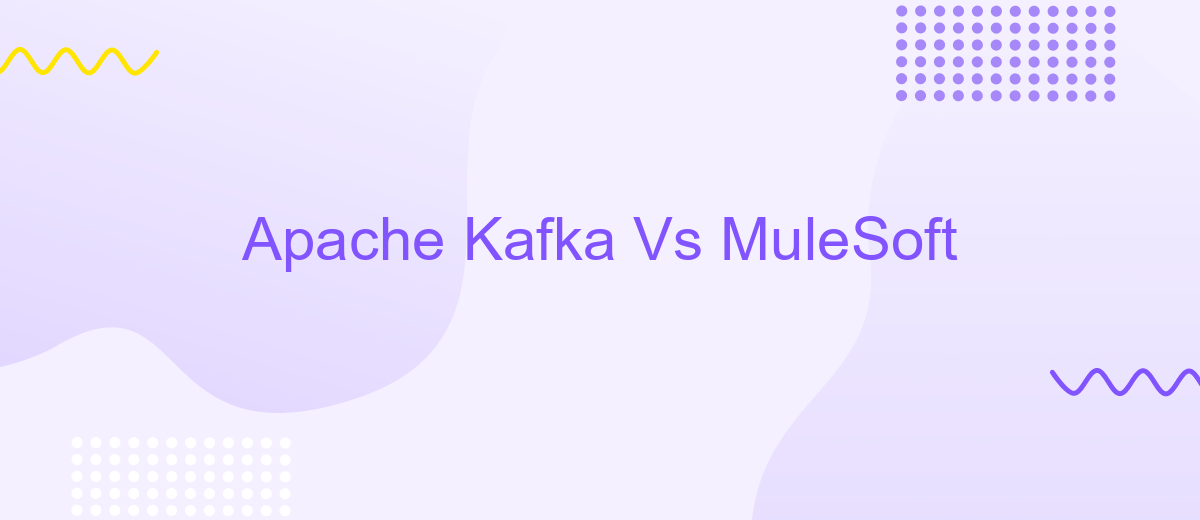Apache Kafka Vs MuleSoft
In today's fast-paced digital landscape, businesses require robust solutions for data integration and real-time processing. Apache Kafka and MuleSoft stand out as two prominent platforms catering to these needs. This article delves into a comparative analysis of Apache Kafka and MuleSoft, exploring their unique features, use cases, and how they can empower organizations to streamline their data workflows efficiently.
Introduction: Overview of Apache Kafka and MuleSoft
Apache Kafka and MuleSoft are two powerful tools in the realm of data integration and real-time data processing. Apache Kafka is an open-source stream-processing software platform developed by LinkedIn and donated to the Apache Software Foundation, written in Scala and Java. It is designed to handle high throughput and low latency data transmission, making it ideal for real-time analytics and event-driven architectures.
- Apache Kafka: Primarily used for building real-time data pipelines and streaming applications.
- MuleSoft: An integration platform that helps businesses connect applications, data, and devices with APIs.
MuleSoft, on the other hand, offers a comprehensive integration platform known as Anypoint Platform, which allows organizations to connect applications and data across on-premises and cloud computing environments. It simplifies the integration process by providing tools for designing, deploying, and managing APIs. For those looking to streamline their integration processes further, services like ApiX-Drive can offer additional automation and ease in connecting various systems and applications efficiently.
Messaging Models: Kafka's Pub-Sub vs. MuleSoft's DataWeave

Apache Kafka employs a publish-subscribe (pub-sub) messaging model, where producers send messages to topics, and consumers subscribe to these topics to receive messages. This decouples the producers and consumers, allowing for scalable and fault-tolerant data streaming. Kafka's pub-sub model is ideal for real-time analytics, log aggregation, and event sourcing, providing high throughput and low latency.
On the other hand, MuleSoft leverages DataWeave, a powerful data transformation language, to facilitate message routing and transformation within its integration platform. Unlike Kafka's pub-sub model, MuleSoft's DataWeave focuses on data manipulation, enabling seamless integration between diverse systems. Services like ApiX-Drive can further enhance MuleSoft's capabilities by automating data transfers and integrations, ensuring efficient and reliable workflows. This makes MuleSoft suitable for complex integration scenarios requiring extensive data transformation and orchestration.
Data Streaming Capabilities and Use Cases

Apache Kafka and MuleSoft offer distinct data streaming capabilities tailored to different use cases. Kafka excels in high-throughput, low-latency data streaming, making it ideal for real-time analytics, event sourcing, and log aggregation. MuleSoft, on the other hand, provides robust integration capabilities, allowing seamless data flow between disparate systems and applications, which is crucial for enterprise service bus (ESB) solutions.
- Real-time Analytics: Kafka enables real-time data processing and analytics by streaming data from various sources to analytics platforms.
- Event Sourcing: Kafka's event-driven architecture ensures reliable event storage and retrieval, suitable for microservices.
- System Integration: MuleSoft facilitates easy integration of various systems, enhancing data consistency and operational efficiency.
- API Management: With MuleSoft, businesses can manage APIs effectively, ensuring secure and scalable data exchanges.
For businesses looking to streamline their integrations, services like ApiX-Drive can be invaluable. ApiX-Drive simplifies the process of connecting multiple applications, ensuring that data flows seamlessly between systems without the need for extensive coding. Whether leveraging Kafka's real-time capabilities or MuleSoft's integration strengths, ApiX-Drive can enhance overall efficiency and data management.
Integration Features and Connector Ecosystem

Apache Kafka and MuleSoft offer distinct integration features tailored to different use cases. Kafka, a distributed streaming platform, excels in real-time data processing and high-throughput messaging. It’s designed for scenarios requiring robust data pipelines and event-driven architectures.
On the other hand, MuleSoft provides a comprehensive integration platform that supports a wide range of connectors and pre-built templates. This allows for seamless integration across various systems, applications, and services, making it ideal for businesses looking to streamline their operations without extensive custom development.
- Apache Kafka: High-throughput messaging, real-time data processing, distributed architecture.
- MuleSoft: Extensive connector library, pre-built templates, API management, and orchestration capabilities.
Both platforms offer unique advantages, but MuleSoft's extensive connector ecosystem and ease of use make it particularly attractive for organizations seeking to integrate multiple services quickly. Tools like ApiX-Drive further enhance MuleSoft's capabilities by automating data transfer and synchronization between various applications, ensuring a more cohesive and efficient integration process.
Data Governance and Security Considerations
When comparing Apache Kafka and MuleSoft, data governance and security considerations are paramount. Apache Kafka offers robust security features, including encryption, authentication, and authorization. It supports SSL/TLS encryption for data in transit and integrates with Kerberos for secure authentication. Kafka's fine-grained access control mechanisms ensure that only authorized users and applications can access specific data streams, thereby maintaining data integrity and confidentiality.
MuleSoft, on the other hand, emphasizes comprehensive data governance and security through its Anypoint Platform. It provides end-to-end encryption, role-based access control, and detailed auditing capabilities. MuleSoft's platform also supports compliance with various industry standards and regulations, ensuring that data handling practices meet legal requirements. For seamless integration and enhanced data governance, services like ApiX-Drive can be utilized to automate data workflows and synchronize data across multiple systems, further strengthening the security posture of your integration landscape.
FAQ
What is Apache Kafka?
What is MuleSoft?
How do Apache Kafka and MuleSoft differ in their core functionalities?
Can Apache Kafka and MuleSoft be used together?
What are some services available for automating and configuring integrations with Apache Kafka and MuleSoft?
Time is the most valuable resource for business today. Almost half of it is wasted on routine tasks. Your employees are constantly forced to perform monotonous tasks that are difficult to classify as important and specialized. You can leave everything as it is by hiring additional employees, or you can automate most of the business processes using the ApiX-Drive online connector to get rid of unnecessary time and money expenses once and for all. The choice is yours!

